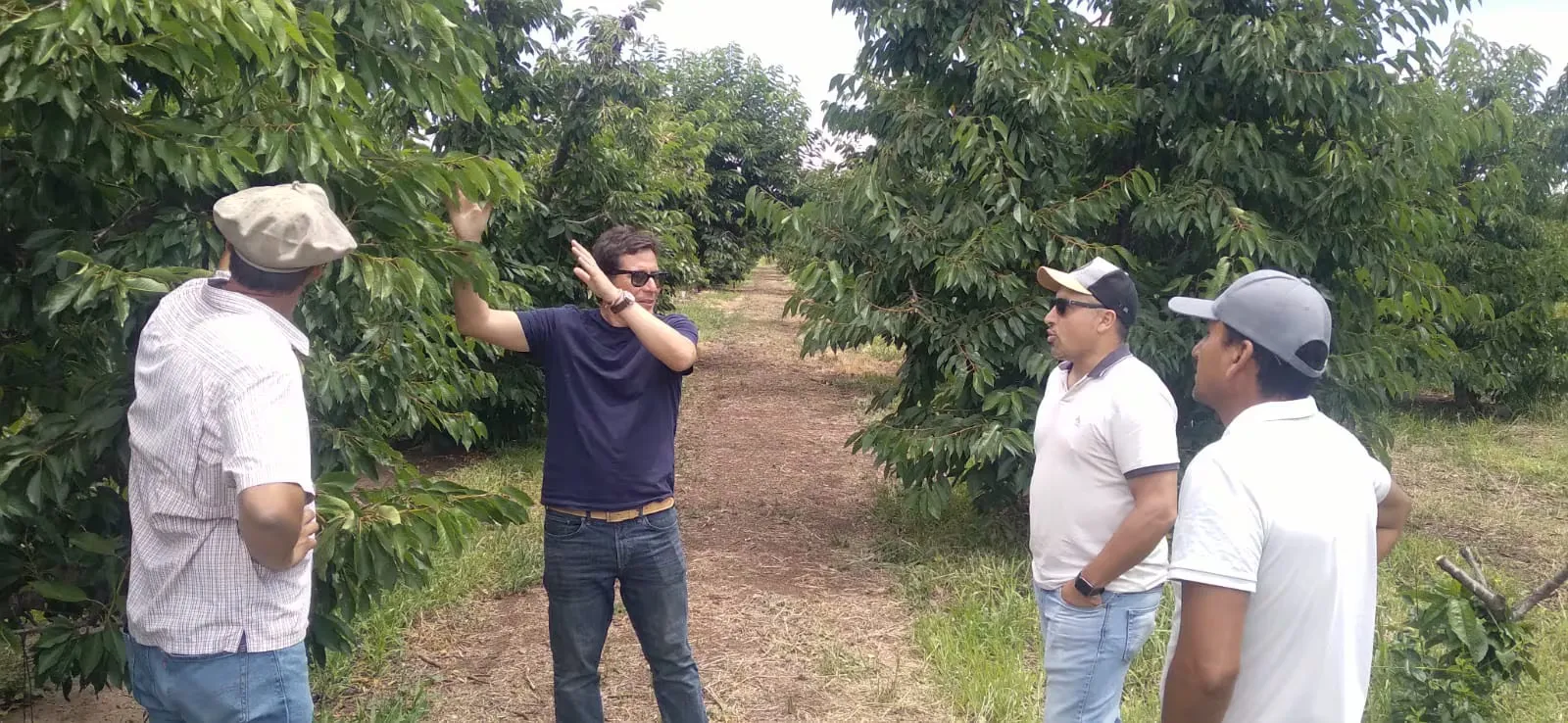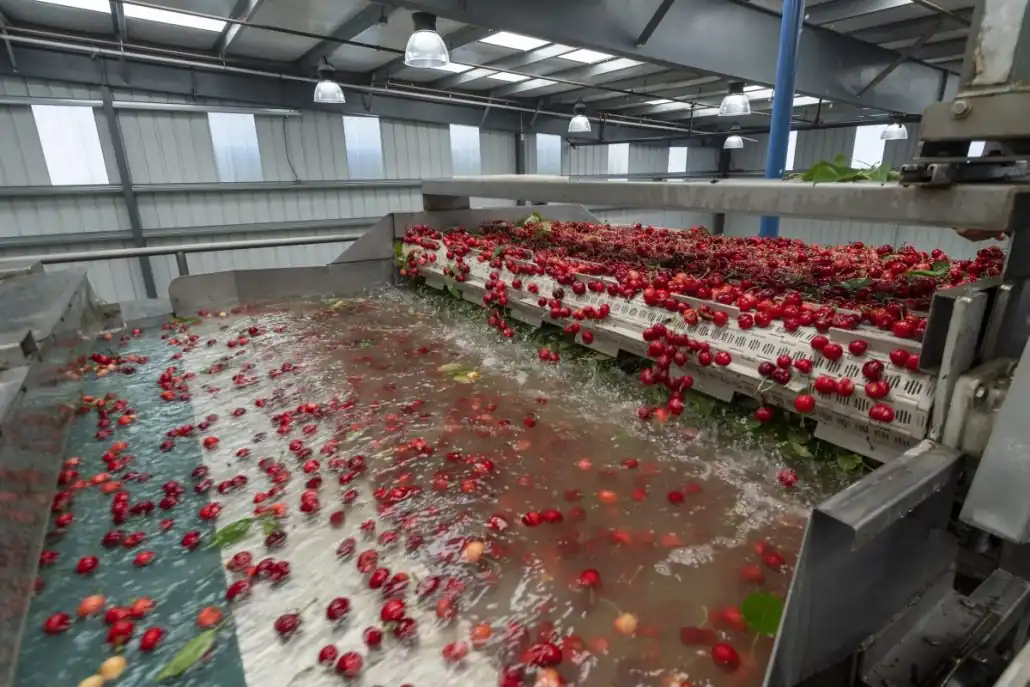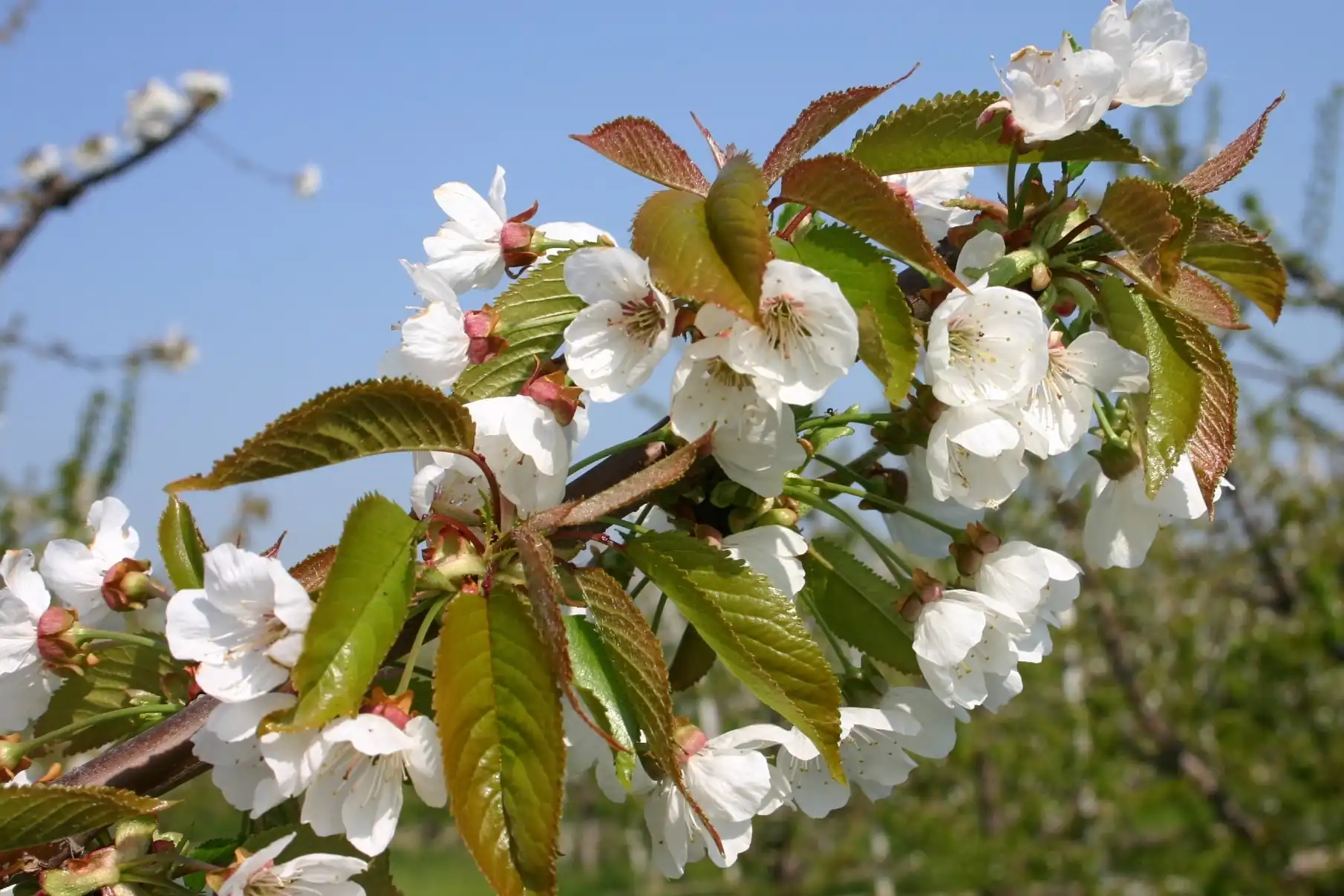The Chilean agronomist Jorge Astudillo Galvez visited the province to make a diagnosis of local production and analyze the opportunities to enter new markets with very early and high-quality fruits.
Last week, the Chilean agronomist Jorge Astudillo Galvez, a specialist in early cherries, visited the province and toured the farms of 15 Mendoza producers to analyze the production conditions and provide technical advice. The purpose of the visit, organized by the Chamber of Cherries of Mendoza with the support of the Ministry of Production, was to offer a diagnosis on how to improve local production to reach new markets.
Although Astudillo had already visited Mendoza before, this is the first time he stayed for several days to conduct a field investigation. He emphasized that this intensive work allowed him to confirm the initial idea of Mendoza's potential, both in terms of production and commerce, which could enhance producers' business prospects. “Today, they produce according to different models, some more traditional, others in transition, and others more technological. What we observed is that the majority could shift towards more technological systems that ensure better prices,” he said.
In Ovalle, cherries are grown very early. Are the conditions the same in Mendoza?
Yes, we share the same timing. We’re talking about the 41st or 42nd week of the first harvests. Currently, the Argentine domestic market absorbs much of the early fruits that appear. In Chile, we are obligated to export. So, these are different commercial strategies.
However, the climate, as it happens in Ovalle, forces us to make investment decisions that go beyond the plants, soil preparation, and irrigation. We need to figure out how to manage the climate. In terms of latitude, you have the conditions to produce early fruits and join a market that includes Chile, South Africa, Australia, and New Zealand.
What did you observe during the farm tours?
We identified three major gaps that need to be addressed. The first concerns varieties and rootstocks. Availability is scarce, and there is practically a monopoly on new varieties. Argentina has limited options for accessing these new varieties that are becoming very interesting. Even the traditional varieties face issues due to the lack of alternative rootstocks to accommodate different soil types. Therefore, the first gap is genetic, varietal.
The second relates to management and is associated with commercial aspects because, depending on the model and environmental conditions of the orchard or farm, more or fewer fruits will be left, more or fewer prunings will be carried out, and more or fewer thinnings will be done. This is influenced by the absence of technological packages, leaving producers subject to climatic conditions.
For instance, they may leave 30,000 kilograms of fruit per hectare because frost, Zonda winds, or hailstorms could thin out the crops and reduce production. In this sense, the activity is secured by initially leaving this amount of fruit. We now understand the need to regulate the load and perform agronomic management to achieve the correct sizes, conditions, and fruit quality, depending on the fruit's destination.
Finally, everything related to technological packages is essential for maintaining stable production over time and serving as insurance during catastrophic weather events that can impact both production and fruit quality.
 Image 1: Chilean agronomist Jorge Astudillo Galvez during his visit to the province, invited by the Cámara de Cerezas de Mendoza and the Provincial Ministry.
Image 1: Chilean agronomist Jorge Astudillo Galvez during his visit to the province, invited by the Cámara de Cerezas de Mendoza and the Provincial Ministry.
What protection is needed for cherries?
Frost and hail are the two most critical factors and can be mitigated with technology. The other is the Zonda wind, which currently cannot be mitigated with investments, but solutions must be sought. If they are not available in Argentina, they must be found somewhere in the world. There is also room for technological innovation to be developed either by the Chamber or the producers themselves.
What is your diagnosis of the local producers' situation?
I conducted a SWOT analysis. In terms of strengths, there is the latitude, which defines the climate and the soil for early cherries; the experience and tradition; the infrastructure; the domestic and international markets—with the domestic market being very important—and the producers and professionals in the sector.
Regarding opportunities, there is the clear global demand growth, the opening of new markets, the innovation and technology we could acquire. Another opportunity, which I have always seen in relation to wine and wine tourism, is tourism and gastronomy. I believe cherries could also be linked to this—a rich, large cherry could be appealing at this time of year. Also noteworthy is the producers' organization, evident in the Chamber's activity.
The weaknesses include the dependency on climate, the production costs, the availability of exportable varieties and rootstocks, and internal and international competition, as the warehouses and exporters handle the commercial side. In other words, producers have little influence on fruit prices. The producer-exporter relationship needs significant improvement, and work can be done in this area.
Another weakness could be the limited infrastructure, as increased production from either manipulation or expanded acreage will require more warehouses and processing lines to pack or process all the fruit.
Finally, the threats include climate change, pests, and diseases; competition with other countries, as we share a niche with Chile, South Africa, Australia, and New Zealand, which will also seek the same markets for early fruits. Another external observation is the changes in commercial policies, which have created some instability, such as tariffs and exchange rates.
What are the most critical points to start working on?
I believe the most crucial thing is to produce the first cherries in Argentina. This could create an identity for the producers in the area. Additionally, continuing to grow, learn, and strengthen what we know, but rationally, avoiding planting everything that worked for our neighbors. We must always work with technical and commercial criteria.
The keys will remain varietal selection, agronomic management, and effective use of technology. With the potential increase in production, greater logistical, infrastructural, and processing capacity will be needed. Opening new markets or destinations with quality cherries is also important. What I observed now is the value of collaboration, the support of research, promotion, and innovation institutions to maintain competitiveness, and, of course, the organization and vision for the future of Mendoza's cherry industry.
Source: Los Andes
Image: Los Andes
Cherry Times - All rights reserved











